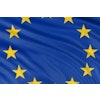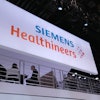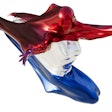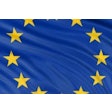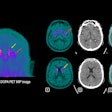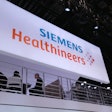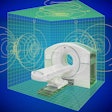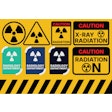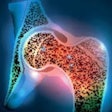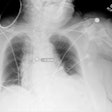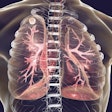
Doctors at my stage of their careers -- late stage, in case you hadn't worked that out -- are sometimes guilty of viewing the past with rose-tinted spectacles and glorifying the practices and attitudes of earlier times. I'm not immune to a twinge of nostalgia myself, but an honest look back at the practice of radiology in the past tells me that progress has generally been for the better.
 Dr. Giles Maskell.
Dr. Giles Maskell.For the education of younger readers, and hopefully the amusement of older ones, I have listed just a few of the things that I don't miss from my early days in radiology.
1. Film
Film is the only place to start. Not only could you injure your back carrying your morning's work from one room to another but there were also enough sharp edges to draw blood on occasion. I've yet to find a PACS that does that.
Film could be lost, stolen, hidden, burned, damaged, or defaced, with or without a chinagraph pencil. It lived in cardboard folders that disintegrated over time with rough handling, accumulating dust and coffee stains as well as a characteristic odour. Attempts to keep the contents of these folders in order relied on colored and/or numbered stickers affixed to the folder and to the corresponding sheet of film. Identifying the most recent image for purposes of comparison required advanced detective skills as it was generally buried deep among unrelated studies in the most unlikely recess of the packet.
Spare a thought, as you scroll painlessly through a stack of CT images, for those of us who learned to interpret this modality from static images printed on multiple sheets of film. Image display required banks of viewing boxes, prone to flickering and other variabilities of illumination, or sometimes the dreaded "roller-viewer," into which sheets of film could drop and disappear forever. Give me a digital image any day.
2. Cassette tape
Having located the image requiring interpretation and any necessary earlier images for comparison, our next challenge was to record a report.
No fancy speech recognition tools for us. For urgent reports we wrote by hand, using a sheet of carbon paper (don't bother looking it up) to create a copy for retention in the x-ray department records. For other reports, we used a variety of handheld dictation devices to record our thoughts onto cassette tape for subsequent transcription. This process again was fraught with hazard. If, having reached the end of a report, you realized that you had forgotten to mention an important observation or perhaps changed your mind about the conclusion, there was little choice but to wipe the whole report and start again.
The devices themselves were prone to a range of malfunctions and were skillfully designed to ensure that you were unaware of them until far too late. Who can forget the feeling of being told that the tape was blank and that an entire afternoon's work would have to be redone? Or indeed the sense of triumph when the skilled application of a biro and a paperclip -- the tools of choice for this task in the hands of an expert -- allowed the tape to be untwisted and order restored. Triumph turned to despair when it transpired that the tape was still blank.
3. Barium
I admit to a little guilt at writing anything even remotely critical about this wondrous fluid which to this day retains an important role in diagnosis. However, its greatest strength was also its biggest drawback: the ability to inveigle itself into places where it wasn't wanted, including hands, shoes, hair, even faces -- and not only those belonging to the patient. Spots of white were worn with pride like campaign medals on the polished black leather shoes of senior radiologists.
4. The lead rubber glove
An essential accessory in the fluoroscopy suite, these were available in left- and right-handed versions. But on a given day, only the wrong one. And yes, one size really did fit all.
Physical discomfort, however, was only a small part of the unpleasantness. A major issue was the smell, each glove retaining more than a hint of every sweaty palm to have used it before. Few of us could don this piece of equipment without an involuntary grimace, accentuated when a friendly colleague was found to have deposited a squirt of lubricant jelly in one of the fingers. Hilarious.
5. Feet
Nowadays, I'm pleased to say that my work very rarely brings me into contact with other peoples' feet, but this was not the case in the past.
Whole afternoons were dedicated to the performance of leg venography, which entailed a close -- too close -- attention to a whole series of feet. And that's not to mention the prince of outdated tests, the lymphangiogram. This was a test so technically demanding that it was habitually left to the most junior trainees to undertake, possibly on the grounds that they were likely to have better eyesight -- or just more time on their hands.
Overall, the practice of radiology has evolved almost beyond recognition in the past 30 years. There are many aspects of our current working lives which we might sometimes want to change, but trust me, some things are best left in the past.
Dr. Giles Maskell is a consultant radiologist at Royal Cornwall Hospitals National Health Service (NHS) Trust, Truro, U.K. He is a former president of the U.K. Royal College of Radiologists. Competing interests: None declared.
The comments and observations expressed herein do not necessarily reflect the opinions of AuntMinnieEurope.com, nor should they be construed as an endorsement or admonishment of any particular vendor, analyst, industry consultant, or consulting group.

